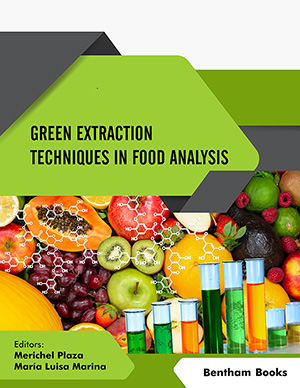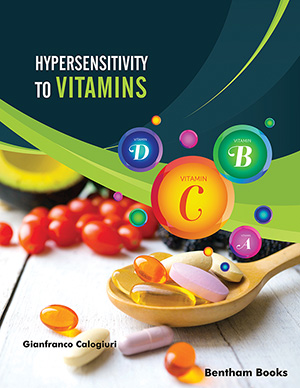Abstract
Background: Eugenia pyriformis produces a round fruit with a sweet and aromatic flavor known as uvaia and contains a range of nutrients and bioactive compounds with potential for industrialization.
Objective: This literature review addresses the nutritional composition, chemical and biological activities of uvaia (seeds and leaves), in addition to listing important factors for the post-harvest and industrialization of uvaia.
Results: A wide range of studies describe the chemical and nutritional composition of fruits and seeds. Among these studies, one considers the residue after processing the fruit and two evaluate leaves. The pulp and peel have a high content of carbohydrates, fibers and sugars with low caloric value and high content of vitamin C. Fruits contain phenolics, flavonoids and carotenoids and the leaves have flavonoids, volatile compounds and tannins. Fruit can be eaten fresh; however, because it is highly perishable and difficult to handle postharvest, industrialization seems to be an interesting alternative to prolong shelf life.
Conclusion: E. pyriformis fruits have excellent attributes for consumer health, but industrialization may be necessary to extend their shelf life. Fruits and leaves have a high antioxidant capacity and antimicrobial potential against bacteria, fungi and protozoa. Essential oils from leaves and trunks have antiproliferative, antileishmanial and anti-inflammatory potential. Mainly fruits and leaves have the potential for use in the pharmaceutical and food industry.
Keywords: Bioactive compounds, brazilian native fruit, uvaia, chemical composition, antioxidant activity, carotenoids.
[http://dx.doi.org/10.1016/j.foodres.2012.03.011]
[http://dx.doi.org/10.1016/j.foodres.2019.03.018] [PMID: 31108783]
[http://dx.doi.org/10.1002/jsfa.9544] [PMID: 30569496]
[http://dx.doi.org/10.1556/AAlim.42.2013.4.13]
[http://dx.doi.org/10.1590/S0100-67622013000100006]
[http://dx.doi.org/10.5151/9788580391732-04]
[http://dx.doi.org/10.1590/2175-7860201465314]
[http://dx.doi.org/10.1590/S0036-46652014000100002] [PMID: 24553603]
[http://dx.doi.org/10.1590/S0100-29452010005000008]
[http://dx.doi.org/10.1016/j.foodchem.2019.04.121] [PMID: 31126498]
[http://dx.doi.org/10.1590/0100-29452018511]
[http://dx.doi.org/10.17801/0101-3122/rbs.v22n2p118-125]
[http://dx.doi.org/10.14393/BJ-v34n1a2018-36311]
[http://dx.doi.org/10.1590/S0100-29452012000100036]
[http://dx.doi.org/10.1016/j.foodres.2019.01.058] [PMID: 30884663]
[http://dx.doi.org/10.1002/jsfa.9961] [PMID: 31368527]
[http://dx.doi.org/10.22409/engevista.v20i4.9540]
[http://dx.doi.org/10.1111/jfbc.12881] [PMID: 31353744]
[http://dx.doi.org/10.1590/0001-3765201420130249] [PMID: 25590738]
[http://dx.doi.org/10.1111/j.1745-4514.2011.00558.x]
[http://dx.doi.org/10.1007/s11947-019-02377-w]
[http://dx.doi.org/10.1021/jf205263f] [PMID: 22397467]
[http://dx.doi.org/10.1590/fst.2014.0049]
[http://dx.doi.org/10.1016/j.foodres.2020.109522] [PMID: 33233155]
[http://dx.doi.org/10.1080/14786419.2019.1669031] [PMID: 31549535]
[http://dx.doi.org/10.1080/10942912.2017.1409761]
[http://dx.doi.org/10.1016/j.lwt.2020.110785]
[http://dx.doi.org/10.1111/j.1365-2621.2011.02653.x]
[http://dx.doi.org/10.1002/cbf.2965] [PMID: 23475531]
[http://dx.doi.org/10.1021/jf501211p] [PMID: 24780053]
[http://dx.doi.org/10.1051/fruits/2009032]
[http://dx.doi.org/10.1016/j.foodres.2020.109690] [PMID: 33292959]
[http://dx.doi.org/10.17660/ActaHortic.2018.1194.136]
[http://dx.doi.org/10.1016/S0925-5214(00)00133-2]
[http://dx.doi.org/10.1016/j.foodchem.2017.06.118] [PMID: 28873617]
[http://dx.doi.org/10.1007/s13659-018-0186-6] [PMID: 30069678]
[PMID: 33977838]
[http://dx.doi.org/10.1016/j.foodchem.2019.125630] [PMID: 31593892]
[http://dx.doi.org/10.1007/s13197-012-0759-z] [PMID: 25328239]
[http://dx.doi.org/10.1155/2017/1591762]
[http://dx.doi.org/10.1590/fst.19417]
[http://dx.doi.org/10.1177/1934578X1100600713] [PMID: 21834237]
[http://dx.doi.org/10.1016/j.abb.2018.06.001] [PMID: 29885291]
[http://dx.doi.org/10.1016/j.foodchem.2010.01.037]
[http://dx.doi.org/10.3390/antiox10020223] [PMID: 33540909]
[http://dx.doi.org/10.1007/978-3-319-39126-7_6] [PMID: 27485222]
[http://dx.doi.org/10.1016/j.foodchem.2018.03.024] [PMID: 29655760]
[http://dx.doi.org/10.1093/database/bau120] [PMID: 25534749]
[http://dx.doi.org/10.33448/rsd-v9i7.5192]
[http://dx.doi.org/10.15536/thema.13.2016.4-17.351]
[http://dx.doi.org/10.15871/1517-8595/rbpa.v15n3p293-298]
[http://dx.doi.org/10.4322/mp.978-65-991393-5-2.c3]
[http://dx.doi.org/10.1016/j.foodres.2017.11.067] [PMID: 29433248]
[http://dx.doi.org/10.1016/j.foodchem.2008.09.098]
[http://dx.doi.org/10.1111/jfpp.14829]
[http://dx.doi.org/10.1590/0103-8478cr20180917]
[http://dx.doi.org/10.1111/jfpe.13250]
[http://dx.doi.org/10.12688/f1000research.11120.1] [PMID: 28649370]
[http://dx.doi.org/10.1590/0001-3765201820170332] [PMID: 30304213]
[http://dx.doi.org/10.5539/enrr.v6n4p18]
[http://dx.doi.org/10.1128/microbiolspec.UTI-0005-2012] [PMID: 26999397]
[http://dx.doi.org/10.17660/ActaHortic.2009.841.58]
[http://dx.doi.org/10.1111/jfpe.13997]




















